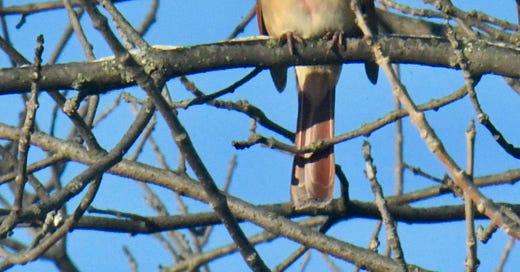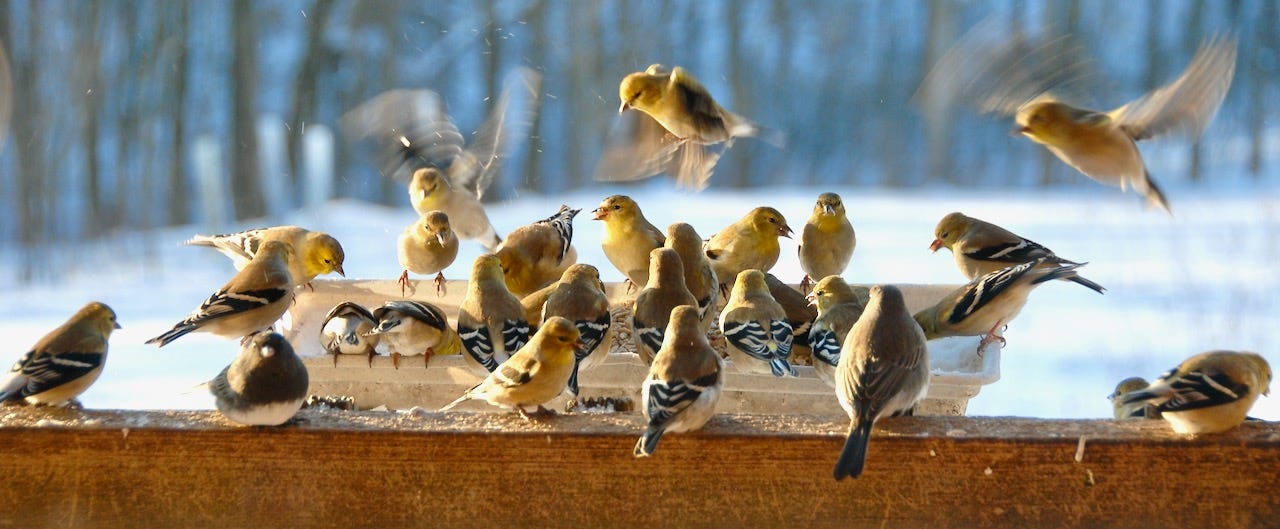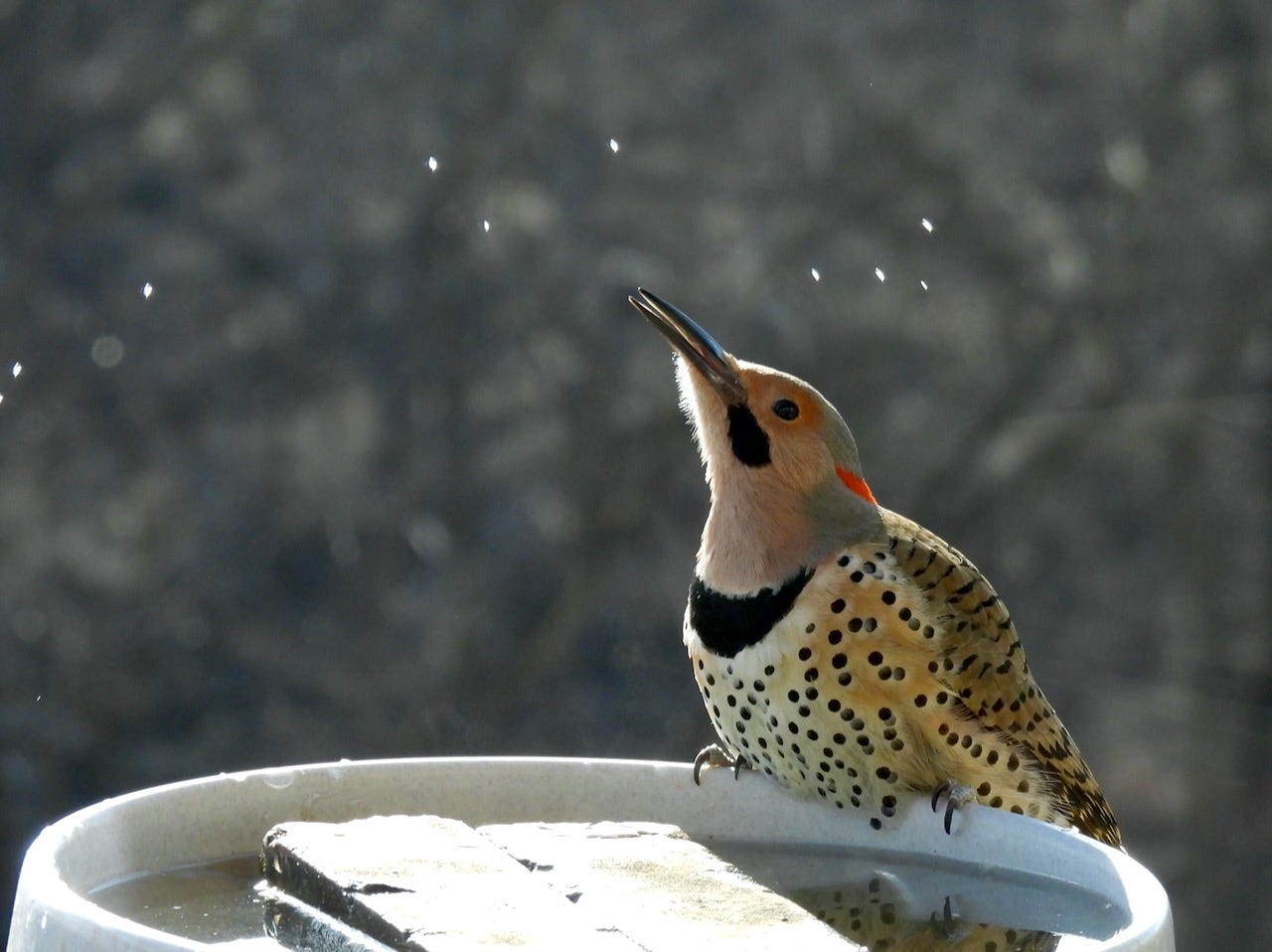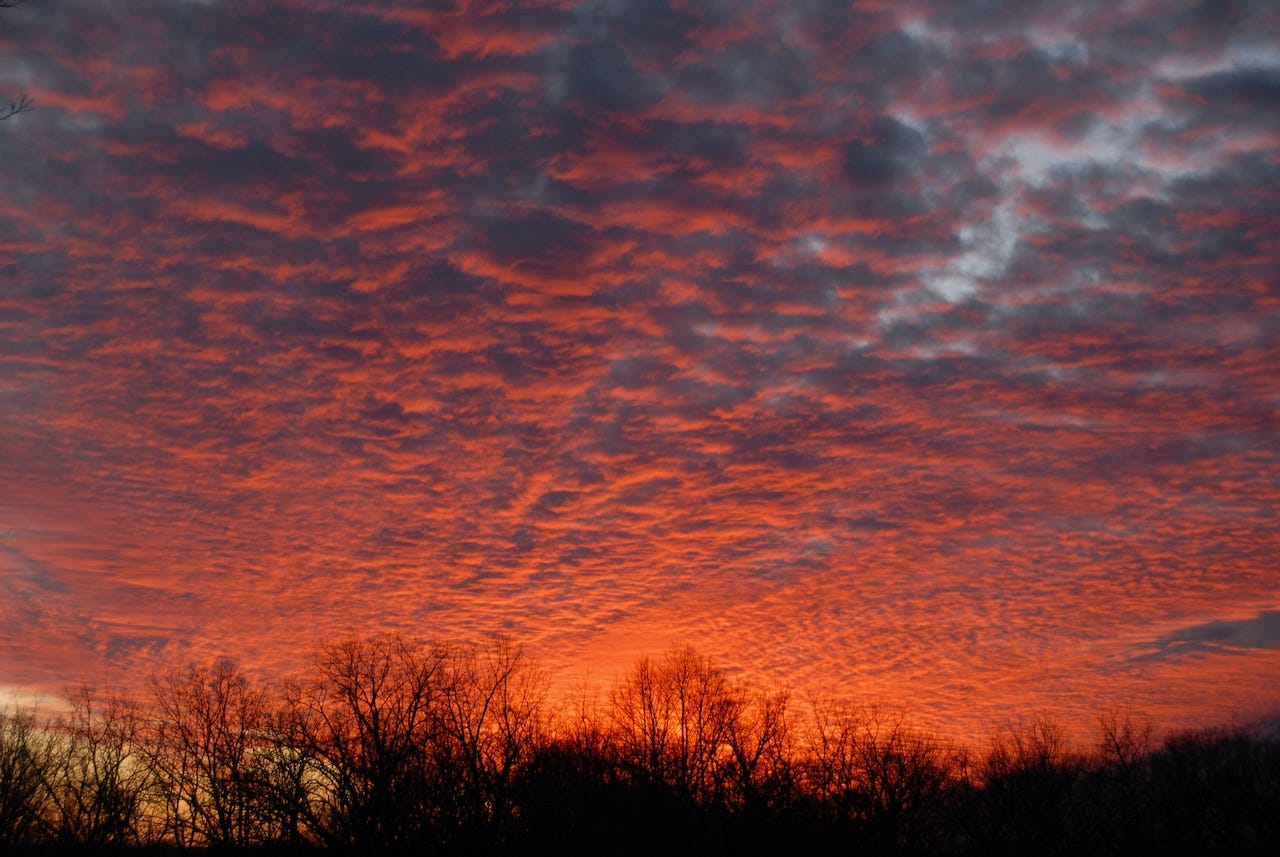Scarf. Stocking hat. Parka. Snow pants. Sweatshirt. Wool liners in chopper mittens. Insulated boots. Wool socks.
What did I forget?
The TV weather forecaster warned insistently about the “cold weather advisory.”
And we heeded their advice to “bundle up” when we went for a walk on a sunny but frigid afternoon. After all, frostbite can occur in 10 minutes or less when the wind chill is in the teens below zero.
But what about the birds around our feeders?
They seem to be doing just fine – although the seed disappears faster than normal. That’s because the sunflower seed banquet we spread for them is much-needed fuel to stoke their biological furnaces.
Puffing up their feathers helps hold in the heat they generate, too. Look closely at our wintering black-capped chickadees and you might have the impression they’re fatter than in summer. And you’d be right! After all, they may need to eat up to 20 times as much food in winter.
The National Wildlife Federation says that chickadees may eat enough to increase their one-half-ounce body weight by 10% during the day – then burn off that amount by shivering all night to stay warm. They also have the ability to lower their 108-degree daytime body temperature by 12 or 15 degrees during the night to further conserve energy.
What the birds also crave is a drink of water – even when it’s below zero. The heated doggy dish we bought at the farm store serves the purpose. Goldfinches, titmice, downy woodpeckers, red-bellied woodpeckers, cardinals, and others sometimes have to wait in line for a sip.
We attribute the unusual presence of bluebirds to the availability of water. They otherwise might migrate a bit farther south during the winter. A male northern flicker – who we see only occasionally in spring and summer – has become a regular.
Gray squirrels also have become regular FREELOADERS who love to gobble the expensive sunflower hearts we’d rather feed to birds. I suppose we tolerate the squirrels because we feel sorry for them.
We also empathize with people who must venture out in the cold. I still recall February 3, 1996, when the temperature fell to an Iowa record-tying 47 below at the Osborne Conservation Center in the valley of the Volga River south of Elkader. My friend Marty, charged with reading the Osborne weather station, did a double-take when he read the number. (OK, it actually registered only minus 46.7!) Besides submitting the information to the National Weather Service, he wrote the historic event on a 2x4 in his shop.
“It was pretty danged cold,” he recalled. “You could hear the trees popping!”
Marty’s trip to Osborne to care for animals in the wildlife exhibit was delayed by a flat tire on his old pickup when he stopped at a convenience store for coffee. A friend hauled him back to his house, where (miraculously!) he was able to start his car.
The bitter cold hung in the Volga Valley, probably making it colder than nearby hilltops. Not surprisingly, Iowa’s other -47 temperature was in 1912 at Washta, in northwest Iowa along the Little Sioux River.
But with the temp forecast to skyrocket up to zero – or even above – in the next few days, we’ll have no excuse not to bundle up again for a hike to enjoy the Iowa January.
I’m privileged to be a member of the Iowa Writers’ Collaborative. Please sample some of their work. Most post are free - but we welcome the support of paid subscribers.
Iowa Writer’s Collaborative










I didn't know that about chickadees, thanks. I'm feeding a “banditry" of them, a "party" of blue jays and a "chittering" of dark-eyed juncos in addition to many other birds. 😊
Thank you Larry for your insights and photos. Today the temps will rise to the thirties. We’ve certainly been on a roller coaster ride this winter.